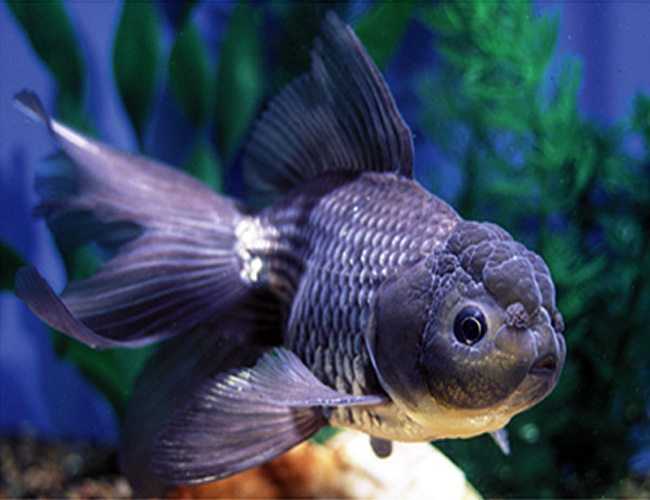Blue Oranda
If you're looking for a gorgeous, eye-catching fish to add to your collection, the blue oranda might be just what you need. With its striking metallic blue scales and flowing fins, this goldfish has become a popular favorite among fish enthusiasts. But before you rush out to buy one, there are some important things you need to know.
Pain Points
Blue orandas can be delicate creatures that require specific water parameters and care to thrive. They are also prone to certain health issues such as swim bladder problems, which can be stressful to manage and treat. Additionally, they are not suitable for a community tank and should only be kept with other goldfish in a suitable environment.
Target of Blue Oranda
Despite these challenges, many fish hobbyists find the beauty and unique characteristics of the blue oranda irresistible. With proper care and attention, these fish can live for many years and provide their owners with endless entertainment and enjoyment.
Main Points
In this article, we will dive deeper into the world of blue orandas and provide you with all the information you need to care for and enjoy these wonderful fish. From their history to their physical characteristics and care requirements, we will cover it all. So, if you're ready to learn more about blue orandas, read on!
The Target of Blue Oranda Explained
When I first saw a blue oranda at my local fish store, I was immediately drawn to its metallic blue scales and flowing fins. I knew right then and there that I had to add one to my collection. However, I quickly realized that caring for this delicate fish was not as easy as I thought.

The blue oranda is a type of goldfish that has been selectively bred over many generations to develop its unique blue color and flowing fins. These fish can grow up to 8 inches in length and require a large tank and specific water conditions to thrive. They also have a tendency to develop swim bladder problems, which can make them float upside down or sideways in the water.
Caring for Your Blue Oranda
Despite these challenges, the blue oranda can be a rewarding fish to add to your collection if you are willing to put in the effort to care for it properly. The first step to caring for your blue oranda is to provide it with a suitable tank. These fish require a minimum of 20 gallons per fish, and the tank should be well-filtered and kept at a consistent temperature.

You should also pay close attention to the water parameters in your tank. Blue orandas require a pH of 6.5-7.5 and a temperature between 68-74 degrees Fahrenheit. It is also important to perform regular water changes to ensure that the water is clean and healthy for your fish.
Feeding Your Blue Oranda
When it comes to feeding your blue oranda, it is important to provide them with a balanced diet. These fish are omnivores and will eat both plant and animal-based foods. You can feed your fish a mixture of high-quality flakes or pellets, as well as fresh or frozen foods such as brine shrimp, bloodworms, and vegetables like spinach or peas.

Personal Experience
Over the years, I have learned a lot about caring for my blue oranda. It takes patience and dedication, but the reward is a beautiful and fascinating fish that brings me joy every day. I have also discovered the importance of researching a fish before adding it to your collection, as each species has specific care requirements that must be met for it to thrive.
Common Questions About Blue Orandas
1. How long do blue orandas live?
A: Blue orandas can live up to 10-15 years with proper care.
2. Can blue orandas live with other types of fish?
A: No, blue orandas should only be kept with other goldfish in a suitable environment.
3. How often should I feed my blue oranda?
A: It is best to feed your blue oranda small portions 2-3 times per day.
4. How can I tell if my blue oranda is sick?
A: A sick blue oranda may exhibit symptoms such as lethargy, loss of appetite, or abnormal swimming behavior. If you notice any of these signs, it is important to seek veterinary care.
Conclusion
If you are looking for a unique and beautiful fish to add to your collection, the blue oranda is definitely worth considering. With careful attention to water parameters and nutrition, these fish can thrive and provide you with years of enjoyment. So why not give them a try?
Gallery
Blue Oranda » DandyOrandas.com

Photo Credit by: bing.com / oranda blue dandyorandas auction closed price
Blue Oranda ~ All About Us In My Blog

Photo Credit by: bing.com / goldfish oranda fantail warna orandas logan primadona tembaga berkilauan mengingatkan maskoki logam memang hobiis
Big Blue Oranda » DandyOrandas.com

Photo Credit by: bing.com / oranda dandyorandas
Blue Oranda » DandyOrandas.com

Photo Credit by: bing.com / oranda dandyorandas
Oranda Blue Or Oranda Goldfish | Arizona Aquatic Gardens

Photo Credit by: bing.com / oranda goldfish blue fancy fish auratus carassius freshwater
